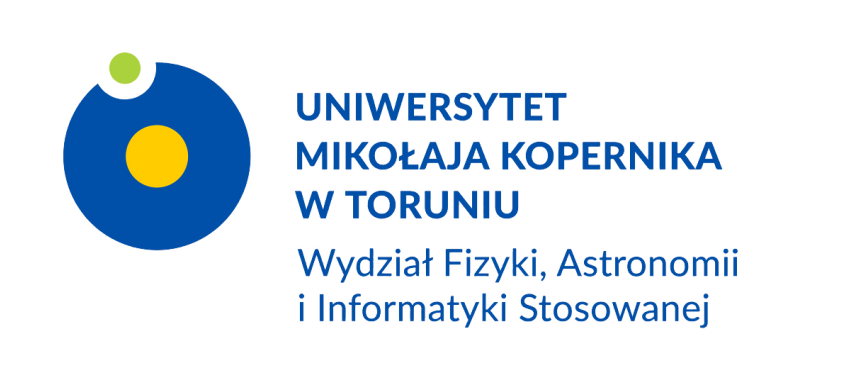Seminarium Ogólne
najbliższe | 2025 | 2024 | 2023 | 2022 | 2021 | 2020 | 2019 | 2018 | 2017
Seminarium odbywa się w Piwnicach w sali wykładowej budynku Radioastronomii. Początek o godzinie 11.15.
Udział w seminarium w trybie zdalnym za pośrednictwem BigBlueButton (BBB).
9 czerwca 2025
“Methanol and ex-OH masers – formation, co-existence, magnetic field and hyperfine transition”
mgr Agnieszka Kobak
Instytut Astronomii UMK w Toruniu
Streszczenie:
Astrophysical masers are widely used in high-mass star formation studies. We observed the 6.7 GHz methanol and 6.035 GHz ex-OH masers to derive physical conditions in the immediate environment of forming high-mass stars. Simultaneous observations of these two maser transitions were made using e-Merlin. Both transitions are radiatively pumped but prefer slightly different physical conditions. We imaged ten high-mass star-forming sites with milliarcsecond angular resolution, identifying regions where excited OH and methanol masers coexist and where they avoid each other. Moreover, we identified circularly polarized Zeeman splitting pairs of the OH transition, estimating magnetic field strengths in the range from 0.2 to 10.6 mG. The detection of linearly polarized components enabled us to compare the directions of magnetic field vectors with the outflows coming from the young star-forming objects.
Moreover, based on these results, we chose two strong sources with coincidence of both masers to identify the dominating hyperfine transition of the 6.7 GHz methanol maser emission. Again, simultaneous observations were made, but to achieve a spectral resolution that allows us to calculate the Zeeman splitting from methanol maser, we used the European VLBI Network. By comparing the magnetic field strength measured with the 6.035 GHz excited OH maser emission and the Zeeman splitting of the 6.7 GHz methanol maser emission, we attempted to estimate the splitting coefficient of the methanol maser.

 Piwnice k. Torunia, 87-148 Łysomice
Piwnice k. Torunia, 87-148 Łysomice